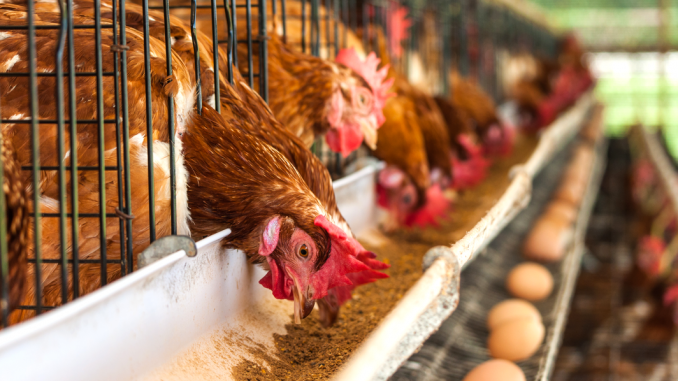How to improve the eggshell quality of laying hens?
- font size
- Be the first to comment!
Farmers who breed laying hens know that the eggshell quality of laying hens is an important indicator of the quality of laying hens. The quality of the eggshell directly determines the breakage rate of the egg and affects the production benefit of the laying hen. The nutritional factors of eggshell quality are mainly the calcium and phosphorus content and proportion in the diet, vitamins, trace elements, electrolyte balance and so on.
1. Ensure the intake of calcium in chickens and the retention time of calcium in the body: Considering the effect of calcium retention time on the quality of eggshells, when the dietary calcium content reaches the theoretical standard, it must also ensure the calcium feed. The particle size (8~12 mesh is good) makes it suitable for chicken absorption and utilization. The experiment proved that: using a full-thickness diet containing 3.5%~4% calcium, the calcium retention in the body after cooking is only 50%. Since the eggshells usually begin to deposit at dusk, the chickens do not get enough calcium supplements at night, which is why the eggshell quality is generally poor when feeding the whole powder diet for a long time. It can be overcome by adding 1% to 1.5% of calcium powder in the diet after 3 pm.

2. Control the effective phosphorus content and the ratio of calcium to phosphorus: the effective phosphorus content in the diet of the laying hen is maintained at about 0.4%, and the eggshell quality is better when the ratio of calcium to phosphorus is 4:1 to 6:1. However, if the effective phosphorus content is too high (0.45% or more), it will cause relatively insufficient calcium and high phosphorus and low calcium.
3. Vitamin supplement: Vitamin D3 is a necessary substance for calcium and phosphorus metabolism in laying hens. It can promote the absorption and conversion of calcium and phosphorus in the intestine, and can overcome the improper proportion of calcium and phosphorus to some extent. Generally, the amount added per kg of feed is 2,000 to 2,500 international units. The quality of eggshells is significantly reduced when vitamin D3 deficiency, failure, or other substances that interfere with vitamin D3 metabolism, such as aflatoxin or other fat-soluble vitamins.
4. Adding trace elements: Manganese and zinc are of particular importance in trace element premixes. At high egg production rates and high stocking densities, at least 70 grams of manganese or an equivalent amount of zinc or slightly higher per ton of feed is required. The magnesium can guarantee the quality of the eggshell, but high manganese will inhibit the absorption of zinc.
5. Maintain electrolyte balance: Chlorine is acidic in chickens, and high levels of chlorine are harmful to eggshells. Because the metabolic acid produced by high chlorine inhibits carbonic anhydrase, hinders the conversion of bicarbonate to carbonate; it also affects calcium and phosphorus metabolism in chickens. Sodium and potassium are alkaline in chickens and can be substituted with each other in a ratio of 1:1 to counteract the effect of excess chlorine in the diet containing normal amounts of sodium and potassium on the eggshell. Studies have shown that in the diet with normal calcium and phosphorus content, baking soda can be used instead of 0.1%~0.5% salt to effectively regulate the acid-base balance in the body, reduce the eggshell breakage rate, and add 0.3%~1% baking soda. Improve the hardness of the eggshell.
The above is how to improve the eggshell quality of laying hens when using chicken cages to raise chickens. I hope to help farmers.


